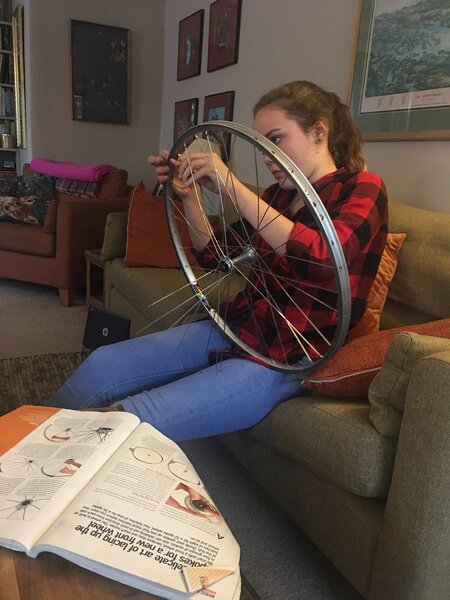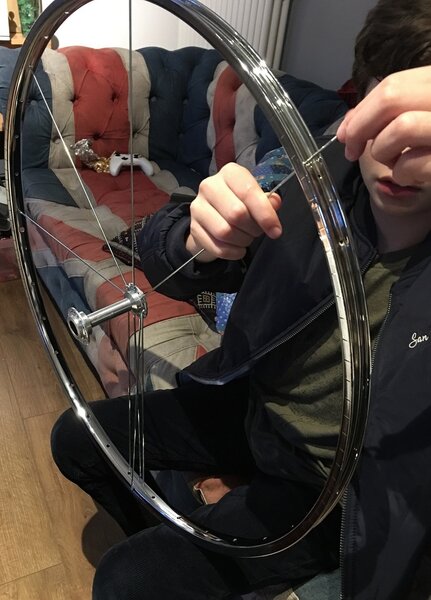2nd here for Musson book, I think the pdf may be available online somewhere. I started with the excellent Sheldon Brown guide but found Mussons technique stuck with me. You can get away without one but I'd recommend buying a spoke tension meter to avoid disappointment.
I agree with doctor-bond on the frame-as-jig option (assuming it's a straight frame) with the addition of masking tape, toothpicks and rectangle bits of cereal boxes for the dedicated pro
Spokes can be expensive - 36 x 2 x £1 = 72. DT sell the nipples separately these days, roughly £20 per 100 retail i think. You can easily get away with same length spokes on the rear for drive-side and non drive-side (assuming symmetrical flanges) and 'double wall' rim.
I'd say results from brand new parts are much quicker/satisfying. Employing used parts can be frustraighting unless you realise that tensioning can only take you so far. i.e If the wheel/parts aren't playing nicely after tensioning then accept you'll have to deviate from the correct tensioning to get a result, but (imo) its best to work towards an evenly tensioned wheel first, then tweak it. You'll always have trouble around he rim join - I try not to focus on it.
Also agree with Oaklec on the used wheel strip/build (assuming it hasn't had a hard life). It could help to take pictures of the wheel built before stripping it.
Some sort of lube on the spole threads is a must for me. just a dip-in-a-drip should make tensioning much smoother.
all the best of you decide to give it a go, (I've been doing it for a number of years and still get a kick out of finishing one) it can be quite rewarding
I agree with doctor-bond on the frame-as-jig option (assuming it's a straight frame) with the addition of masking tape, toothpicks and rectangle bits of cereal boxes for the dedicated pro
Spokes can be expensive - 36 x 2 x £1 = 72. DT sell the nipples separately these days, roughly £20 per 100 retail i think. You can easily get away with same length spokes on the rear for drive-side and non drive-side (assuming symmetrical flanges) and 'double wall' rim.
I'd say results from brand new parts are much quicker/satisfying. Employing used parts can be frustraighting unless you realise that tensioning can only take you so far. i.e If the wheel/parts aren't playing nicely after tensioning then accept you'll have to deviate from the correct tensioning to get a result, but (imo) its best to work towards an evenly tensioned wheel first, then tweak it. You'll always have trouble around he rim join - I try not to focus on it.
Also agree with Oaklec on the used wheel strip/build (assuming it hasn't had a hard life). It could help to take pictures of the wheel built before stripping it.
Some sort of lube on the spole threads is a must for me. just a dip-in-a-drip should make tensioning much smoother.
all the best of you decide to give it a go, (I've been doing it for a number of years and still get a kick out of finishing one) it can be quite rewarding

